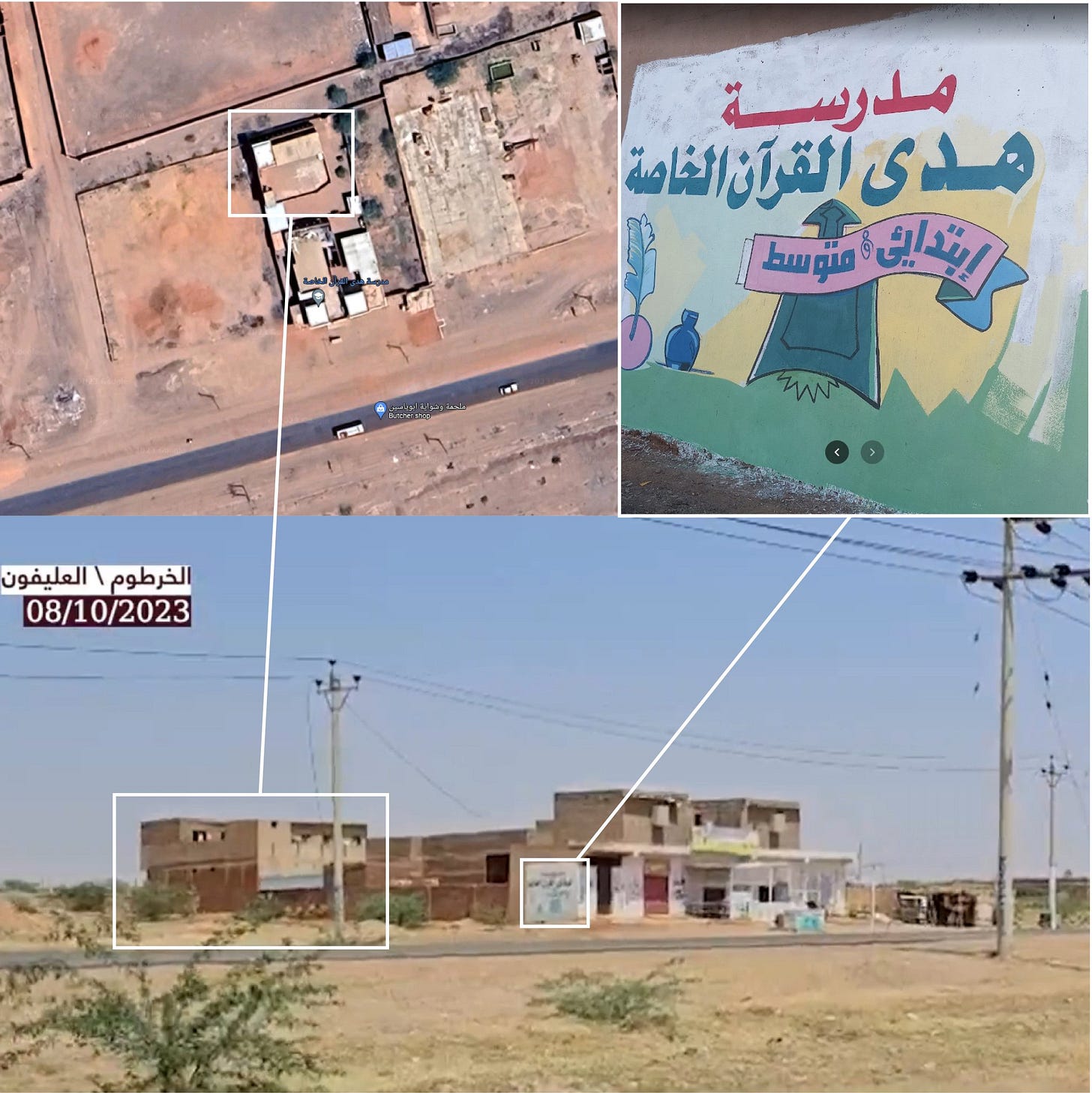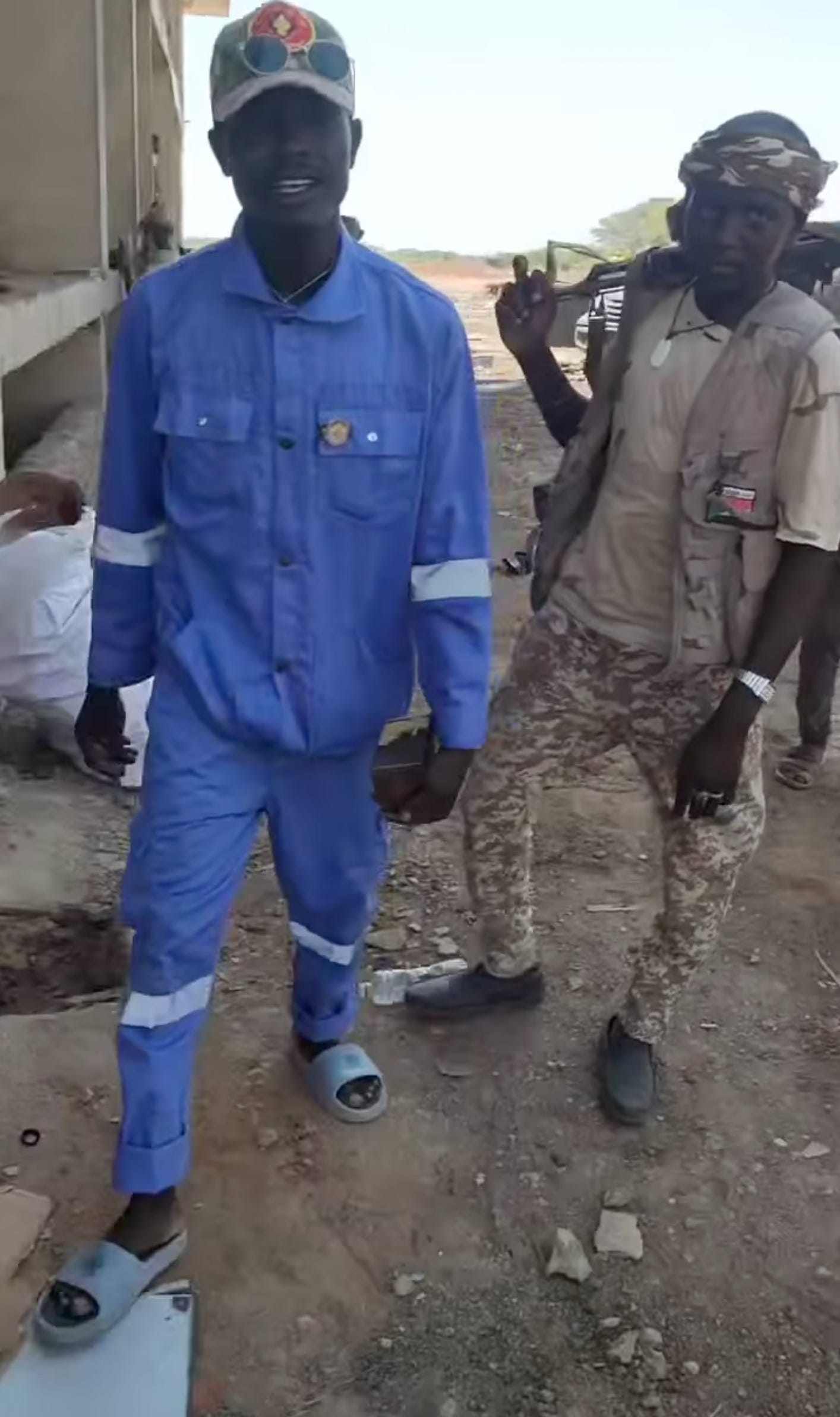An “engineers field team” of the Rapid Support Forces removed four landmines in al-’Aylafun in Khartoum State, east of the Blue Nile, earlier this month, according to a video filmed by a well-known RSF media influencer.
While landmines have been used historically in conflicts in the Nuba Mountains, Darfur, and South Sudan, there have been few if any reports of landmines used in the capital region since the conflict began in April 2023.
The RSF said in the video above that they were filming on October 7, 2023.
One member of the RSF engineers team wore a hat with the insignia of the SAF Engineers Corps, suggesting he was trained by the army before joining RSF.
Another official video released by the RSF media team shows RSF engineers de-mining in a field in al-’Aylafun (15.454253, 32.731628).

Apart from landmines, the larger problem in Khartoum State so far has been other types of unexploded ordinance. According to the UN Mine Action Service (UNMAS),
“Since the start of the conflict between the Sudanese Armed Forces (SAF) and the Rapid Support Forces (RSF) that erupted on 15 April 2023, the widespread use of conventional weapons including field artillery, mortars, air-dropped weapons and anti-aircraft guns has left plenty of unexploded ordnance (UXO) in Khartoum and other urban areas such as El Obeid in North Kordofan, El Fasher in North Darfur, El Geneina in West Darfur, and Nyala in South Darfur.”
… Of particular concern, the residents of Khartoum have not received Explosive Ordnance Risk Education (EORE) in the past unlike communities in other regions of the Sudan, which have faced armed conflicts and where the Mine Action Area of Responsibility had previously invested in risk education.
Prior to the conflict (as of March 31, 2023), most mine-contaminated areas in the country had been cleared, according to the UNMAS website. The organization estimated that 138.09 km2 (80.2%) out of the recorded 172 km2 of contaminated land had been released.





